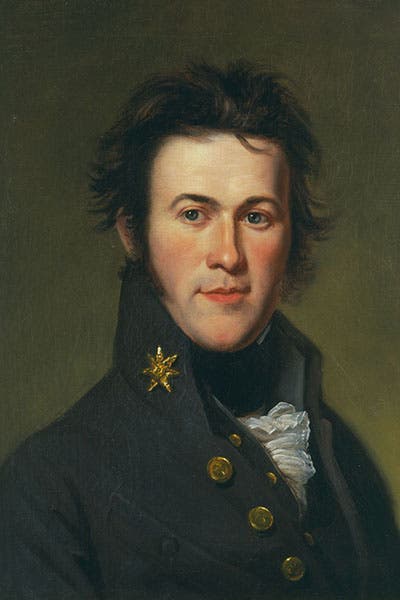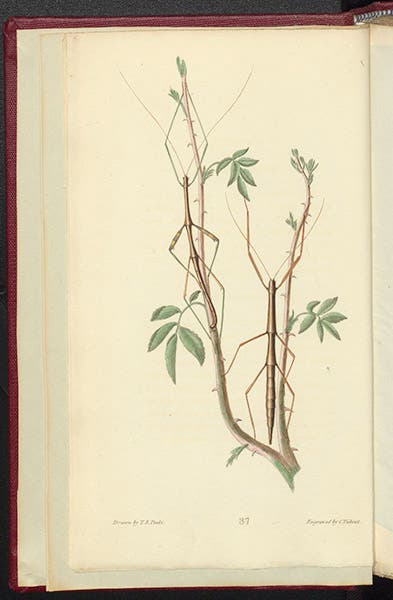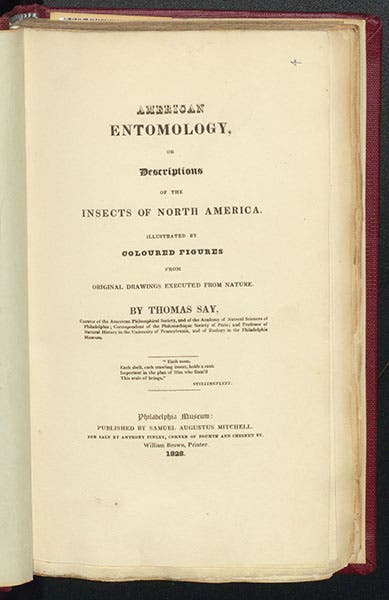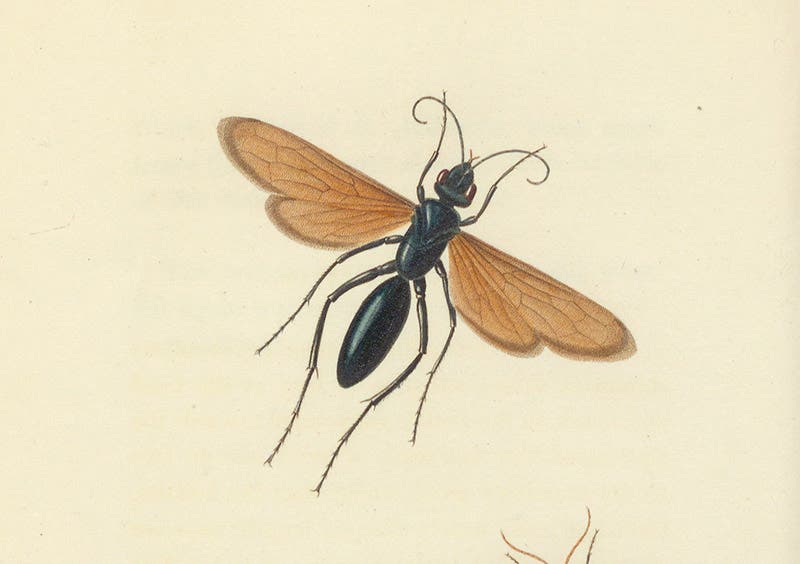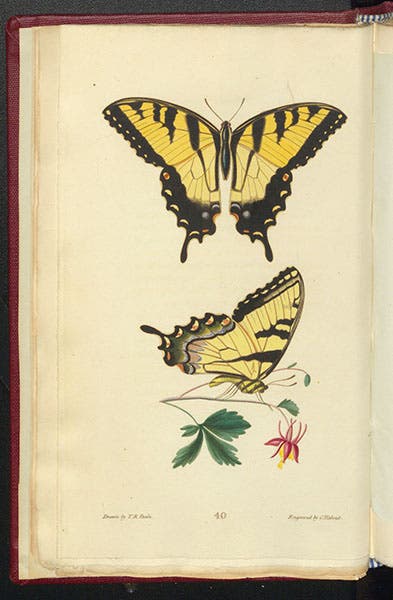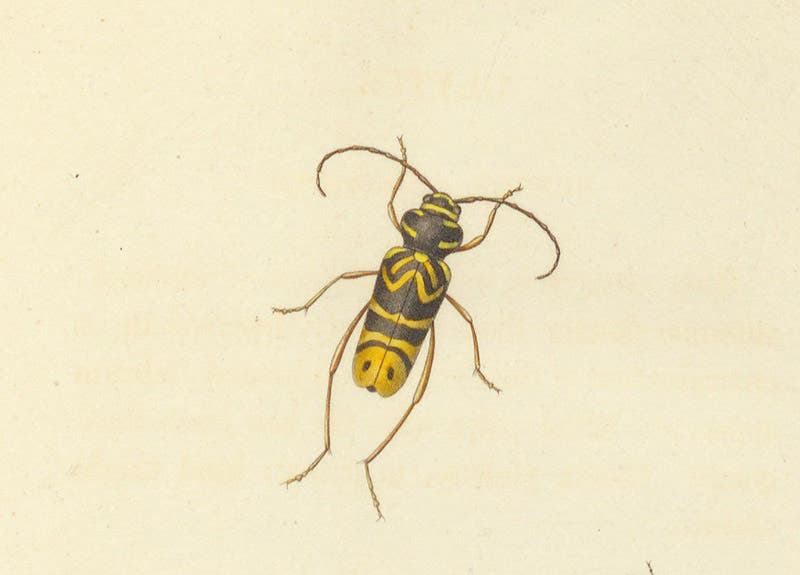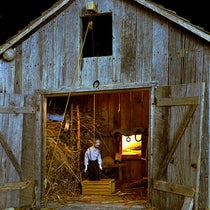Scientist of the Day - Thomas Say
Thomas Say, an American naturalist, was born June 27, 1787. Say came of age in Philadelphia; he was one of the founders of the Academy of Natural Sciences there in 1812. He became arguably the first fully competent naturalist in the young Republic, producing descriptions that were the equal of those of European naturalists, and often even better. His main field of expertise was insects, and his American Entomology, beautifully illustrated, was the first American book in the field, and we will look at it in a moment. Say was also an explorer, and he was invited to accompany Major Stephen Long on his expedition to the Rocky Mountains in 1819-1820. One of his companions on that venture was Titian Ramsay Peale, the youngest son of artist Charles Willson Peale and an up-and-coming naturalist painter. Say collected, and Peale drew.
Before they left for the great West, the Peale pater familias painted portraits of Say, Titian, and Long, so that, if they "lost their skalps," their families would have something to remember them by. Charles apparently did not have a lot of faith in the expedition’s future. His portrait of Say is our fist image. But all returned in good health, and with plenty of specimens, including many new species, such as the swift fox that Say first described and John James Audubon famously painted later on.
The first volume of American Entomology was published in 1824, and two more volumes followed, the last in 1828. There are 53 beautiful hand-colored plates in the three slim volumes, engraved by Cornelis Teihout after drawings mostly by Titian Peale, but with some contributed by Charles-Alexandre Lesueur and a few others. We show four of those here, two with details, so you can see how exquisite these engravings are. All our images are from volume 3, which is the only volume we have scanned so far.
In the text, Say provided a Linnean name, and a dry technical description, but then in a section called “Observations,” he wrote rather colloquially about where the specimen was found (usually somewhere along the route of the Long expedition) and what it tells us about the lives of insects. Of the spider wasp Pompilus (fourth and fifth images), Say recounted: “Descending the Arkansaw river, with Major Long’s party, I was one day surprised to see a species of this genus, dragging along the ground the body of the gigantic Bird-catching spider, the Mygale avicularia, or a very closely allied species.” He had similar tales to tell about most of his specimens.
In 1826, Say, along with several other Academy members (but not Titian), left Philadelphia for New Harmony, Indiana, to take part in Robert Owen's utopian experiment there. Thomas acquired a wife, Lucy, whom he met on the boat to New Harmony, and he seems to have found life there harmonious enough, for he stayed until his death in 1834, from typhoid fever. Lucy illustrated his second work, American Conchology (1830-38), published in New Harmony, and she saw the final volume through the press back in Philadelphia. We recently acquired the first edition for our collections. We wrote a post on Lucy Say last fall, before this acquisition, so we shall have to revise it in the near future.
As for portraits of Say, well, there we really luck out. Say was a member of an elite group (that included Thomas Jefferson and George Washington) who had portraits painted by two members of the Peale family. We have already mentioned and shown you the portrait painted by Charles in 1819 (first image). In 1841, the Academy commissioned a portrait of Say from Rembrandt Peale. Since Say had been dead for 7 years, Rembrandt had to rely on his father’s portrait, but he gave it his own stamp, and in the opinion of many, the result is one of the most handsome 19th-century portraits of one of the century’s most handsome men, and it is a real stunner (ninth image). Both portraits are to be found in the Academy of Natural Sciences. There are many reasons to visit Philadelphia and the Academy, but seeing these two paintings should be high on your list.
I would like to thank Bob Peck, senior fellow at the Academy, for sending me high-resolution images of the two Peale portraits, and Patricia Tyson Stroud, whose biography, Thomas Say, New World Naturalist (1992), although published 30 years ago, is still the latest word on Say.
William B. Ashworth, Jr., Consultant for the History of Science, Linda Hall Library and Associate Professor emeritus, Department of History, University of Missouri-Kansas City. Comments or corrections are welcome; please direct to ashworthw@umkc.edu.


